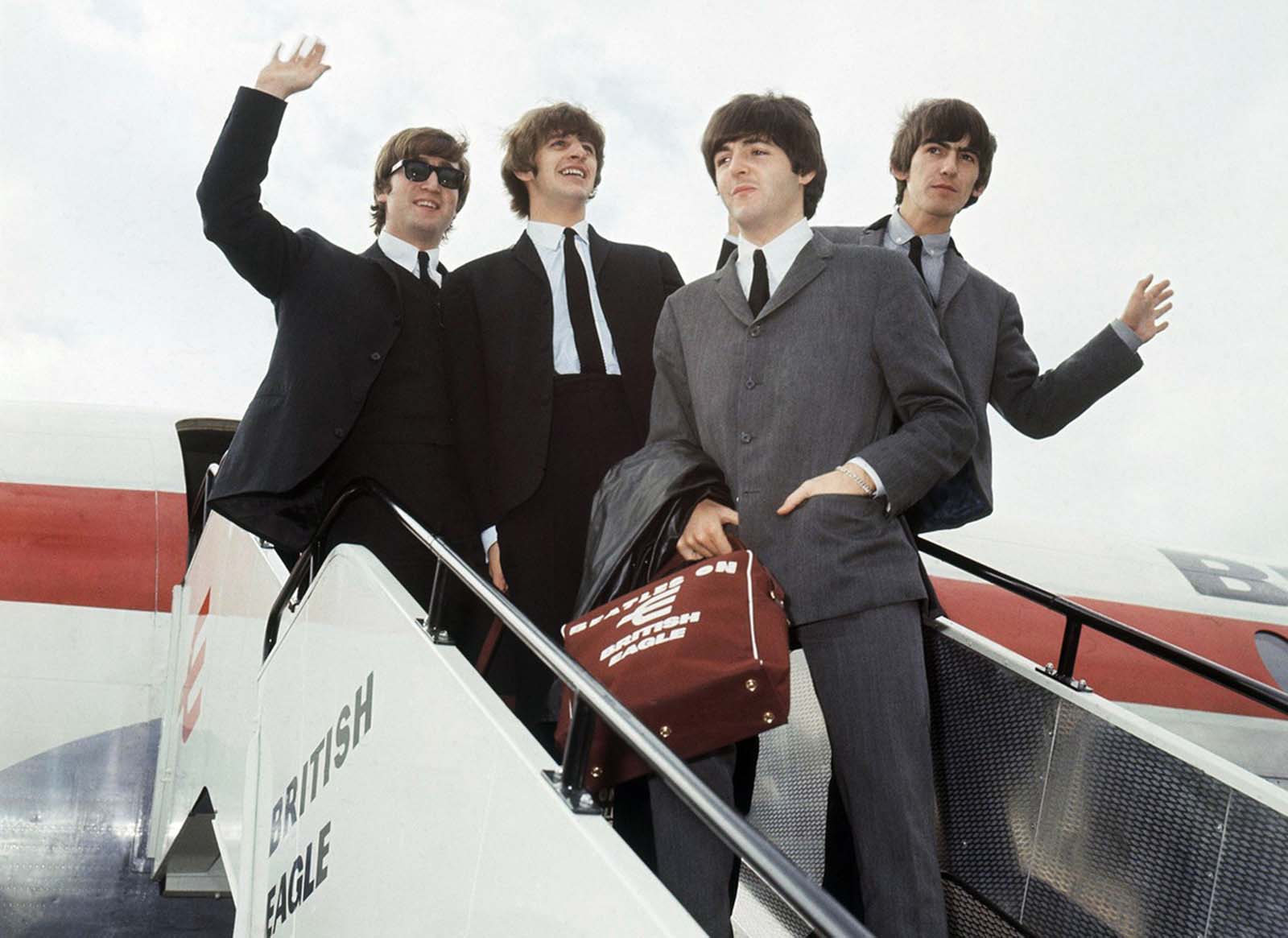
The Beatles leave London airport in 1964. From left: John Lennon, Ringo Starr, Paul McCartney, and George Harrison. Enthusiastic fans welcomed the Beatles in airports and concert halls around the world in 1964, as Beatlemania swept the globe.
In 1964, the Beatles achieved an unprecedented level of success both in their home country of Britain and in the United States. They amassed crowds of adoring fans that followed them wherever they went, a phenomenon often referred to as “Beatlemania.”
On February 9, 1964, an estimated 73 million people tuned in to see the Beatles perform live on The Ed Sullivan Show, a popular television program. This meant that 45% of homes with televisions in the U.S. were watching the Beatles, a record at that time.
Their appearance on The Ed Sullivan Show, coupled with radio play and album promotion, spurred their meteoric rise in America. By April 4, 1964, the group held the first five spots on the Billboard Hot 100 list of popular songs, with “Can’t Buy Me Love,” “Twist and Shout,” “She Loves You,” “I Want to Hold Your Hand” and “Please Please Me” crowding the top of the charts. No other act in history has achieved such a feat.
In 1965, their concert at New York’s Shea Stadium marked the first time that a large outdoor stadium had been used for such a purpose. The event attracted an audience of 55,000, the largest of any live concert that the Beatles performed. Beatles fans were so excited and determined to see the band that police sometimes resorted to using fire hoses to hold them back.
The Beatles provided one of the first opportunities for female teenagers in Britain to exhibit spending power and publicly express sexual desire, while the group’s image suggested a disregard for adults’ opinions and parents’ ideas of morality.

Sightseeing in Paris, on January 15, 1964, the day before their opening at the Olympia Theatre in Paris, three of Britain’s four Beatles pause for a look around on the Champs Elysees. From left John Lennon, Paul McCartney, and George Harrison. In the background is the Arc de Triomphe.
In the description of author and musician Bob Stanley, the band’s domestic breakthrough represented a “final liberation” for the nation’s teenagers and, by coinciding with the end of National Service, the group “effectively signaled the end of World War II in Britain”.
By 1966, John Lennon controversially remarked that the group was “more popular than Jesus now”. Soon after, the Beatles’ travels were further entangled by mob revolt, violence, political backlash, and threats of assassination, as well as more extreme displays of deity-like worship.
They were so overwhelmed that they stopped touring and became a studio-only band. Although commentators speculated that the move would lead to a decline in popularity, their 1967 album Sgt. Pepper’s Lonely Hearts Club Band was critically acclaimed and revolutionized the music industry.
By then, the Beatlemania phenomenon had largely subsided, though the group maintained a loyal following and commanded much cultural influence throughout the remainder of their career and in the decades since.

John Lennon, left; George Harrison, center holding guitar; and Ringo Starr from the Beatles, backstage in Versailles, France, on January 15, 1964.

The Beatles perform their first concert outside of Britain, at the Olympia in Paris, on January 17, 1964.

Police hold back screaming fans fighting to get near their idols, the Beatles, when the Liverpool pop group returned to London Airport from Paris, on February 5, 1964. A strong police escort had to accompany the four Beatles from their aircraft to the customs channel.

Three Beatles fans attempt to enter the Customs Hall at London Airport by crawling into the baggage conveyor belt on February 5, 1964.

The Beatles, from left, Ringo Starr, George Harrison, John Lennon and Paul McCartney, in their New York hotel after their arrival in the U.S. on February 7, 1964. The British rock group, on their first American tour, was pelted with jelly beans and candy kisses by screaming teen-age fans.
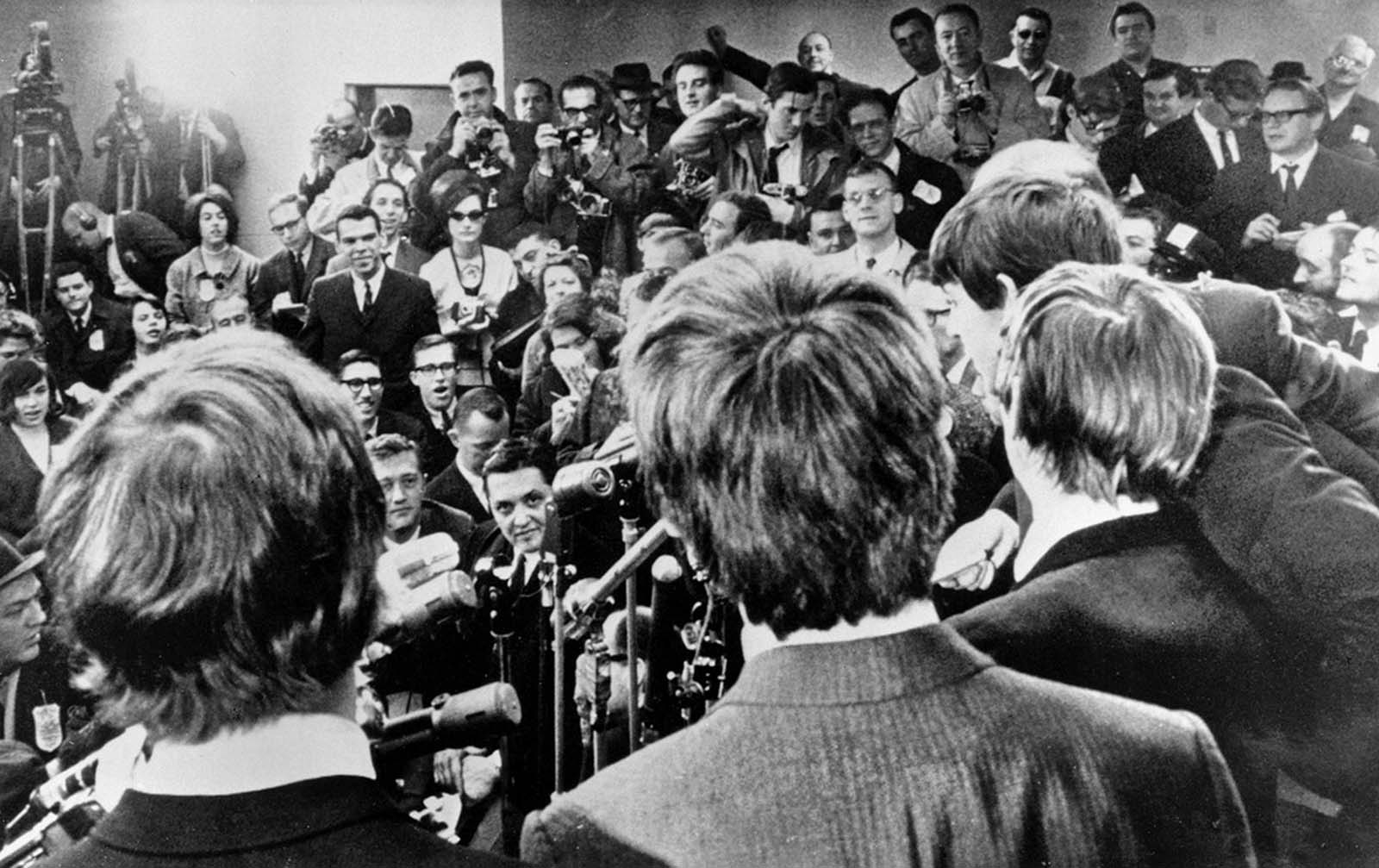
The Beatles face the media on their arrival in New York on February 7, 1964.
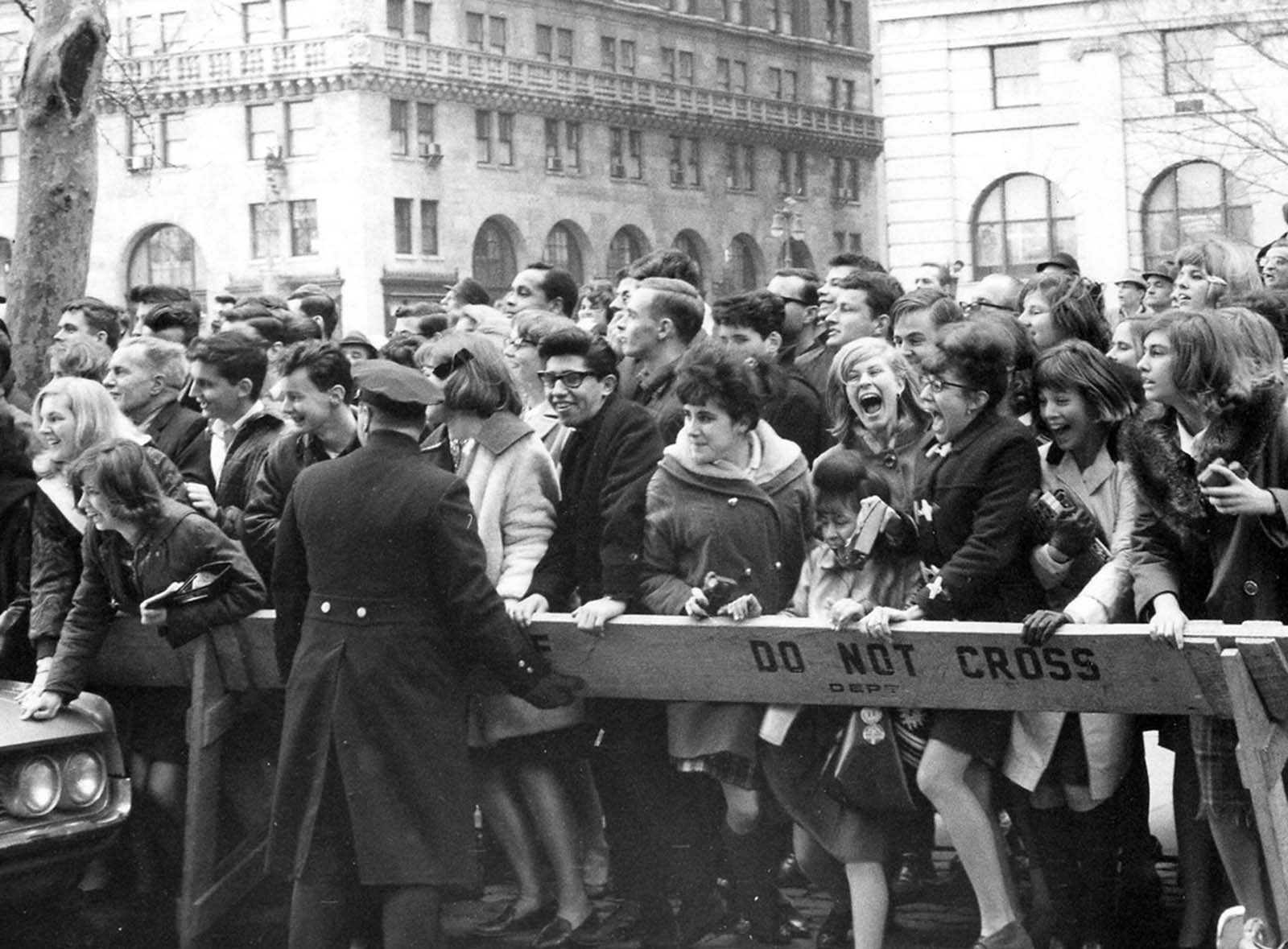
Beatles fans push forward in hopes of getting a view of the band after their arrival for an American tour in New York on February 7, 1964.
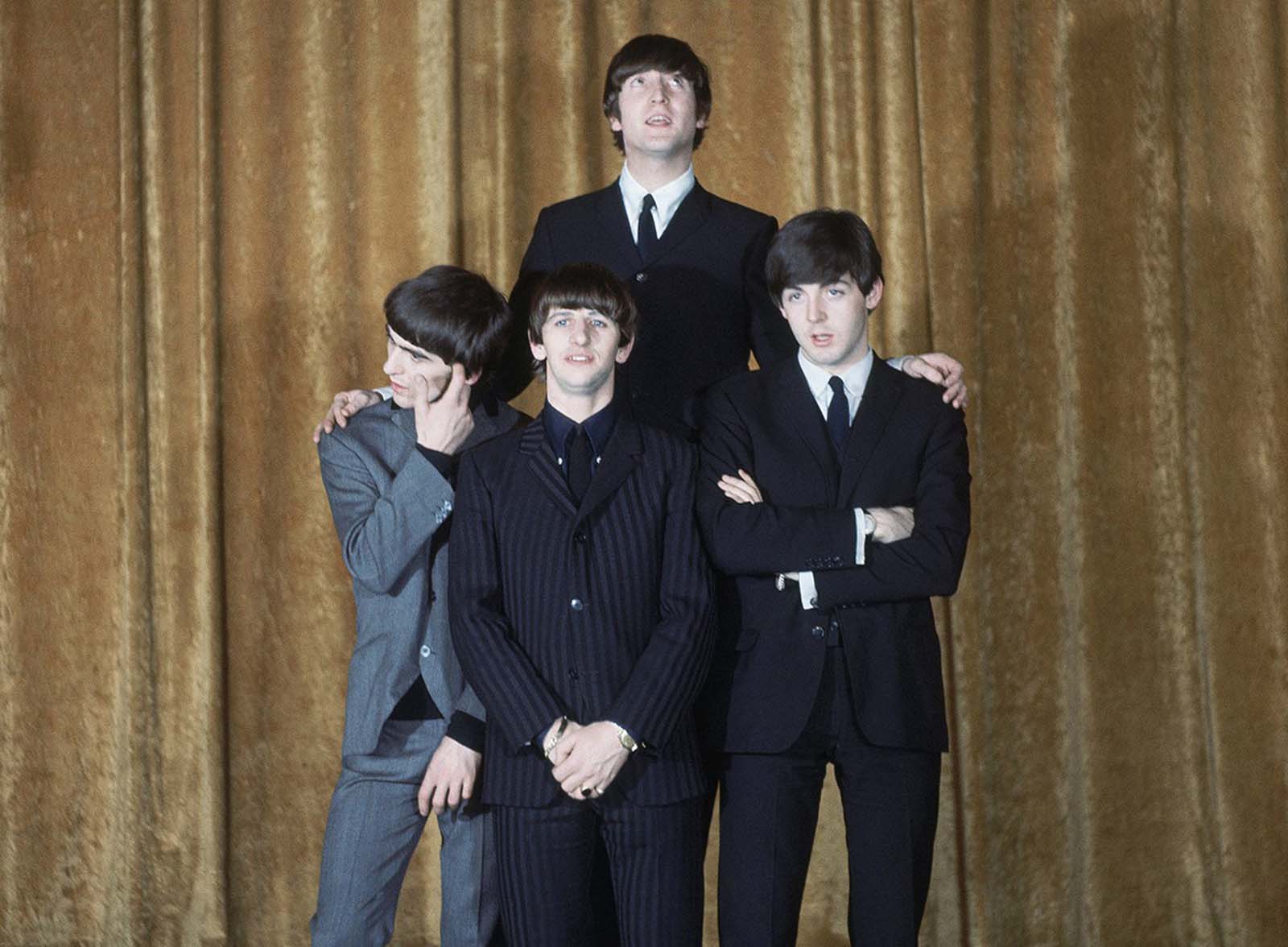
The Beatles on the set of the Ed Sullivan Show in New York, on February 8, 1964.
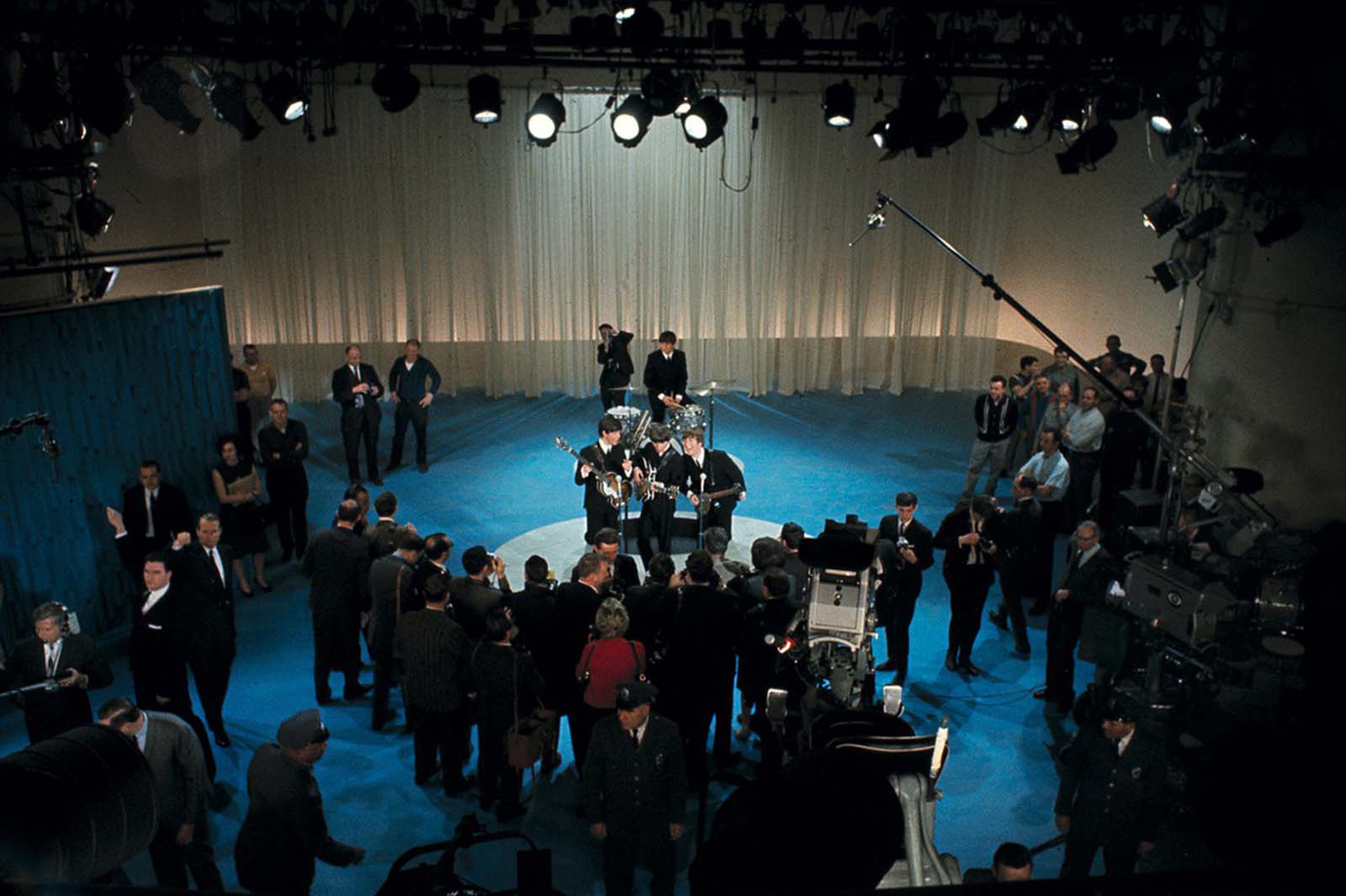
The British rock and roll group the Beatles are surrounded by photographers on stage at CBS’ Studio 50 before their live television appearance on The Ed Sullivan Show in New York City on February 9, 1964.
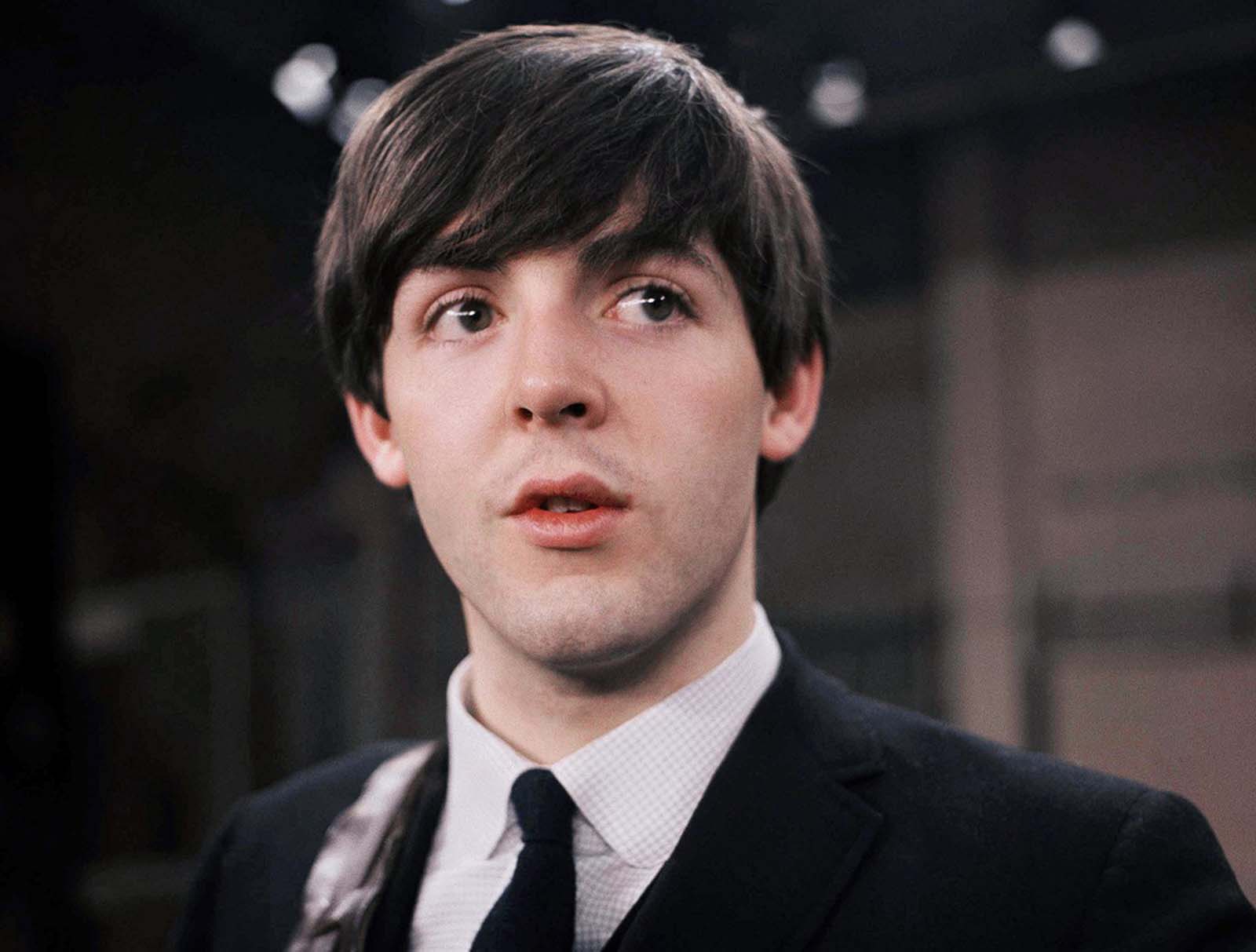
Paul McCartney, 21 years old, on the set of the Ed Sullivan Show with the Beatles, on February 9, 1964.

Paul McCartney, right, shows his guitar to Ed Sullivan before the Beatles’ live television appearance in New York on February 9, 1964. Behind Sullivan, from left, Beatles manager Brian Epstein, John Lennon, and Ringo Starr.



